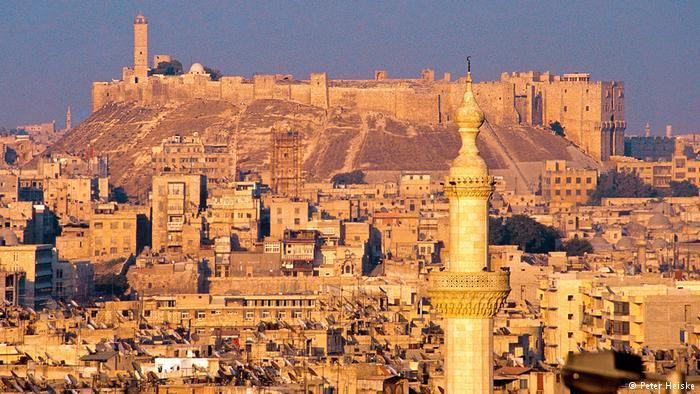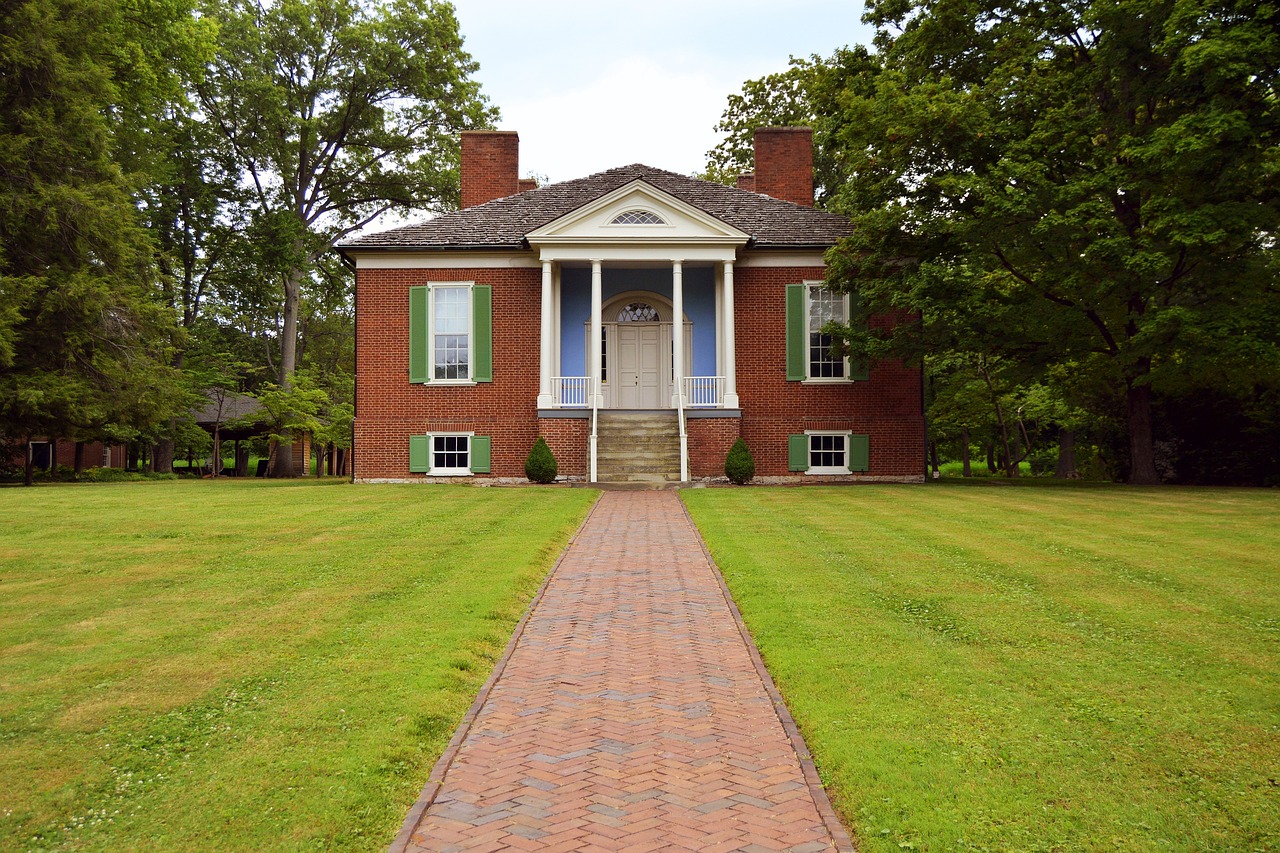Introduction
Aleppo, one of the oldest continuously inhabited cities in the world, stands as a living testament to the rich tapestry of human history. Located in modern-day Syria, Aleppo has been a thriving urban center for over five millennia, its significance spanning through the epochs of antiquity, making it an archaeological treasure trove. In this article, we delve into the historical significance of Aleppo in antiquity and explore the pivotal role it played in shaping ancient civilizations.
Aleppo, often referred to as “Halab” in its native Arabic, stands as an enduring marvel, a city that has witnessed the ebb and flow of countless civilizations over millennia. Its very name resonates with history, and its ancient streets tell stories that span the ages. As we embark on a journey into Aleppo’s past, we uncover a city that has shaped and been shaped by some of the most influential empires and cultures in human history.
In antiquity, Aleppo was more than just a city; it was a nexus of trade, culture, and innovation. The earliest records of Aleppo date back to the 3rd millennium BCE, a time when it was already a bustling hub along trade routes connecting Mesopotamia, Anatolia, and Egypt. Its strategic location made it a crossroads of civilizations, a melting pot where ideas, goods, and cultures converged.
One cannot discuss Aleppo’s historical significance without mentioning its role in the rise and fall of empires. The city witnessed the march of Hittites, Assyrians, and Egyptians, each leaving their indelible mark. However, it was the Silk Road that truly catapulted Aleppo into prominence during the Roman and Byzantine periods. As a vital stop on this ancient trade route, the city thrived, and its markets brimmed with exotic spices, silks, and treasures from the East.
Aleppo’s history is not just a tale of trade and conquest; it is a story of resilience. The city withstood sieges, earthquakes, and the shifting tides of geopolitics. Its famous citadel, perched atop a hill overlooking the city, became a symbol of Aleppo’s endurance. From Roman fortifications to Arab reconstructions, the citadel bore witness to the passage of time and the tenacity of its inhabitants.
In the Islamic era, Aleppo continued to flourish. It became a center of learning and culture, with its Great Mosque standing as an architectural masterpiece. The city’s labyrinthine souks, or markets, became renowned for their craftsmanship and merchandise, drawing merchants and travelers from distant lands.
Throughout history, Aleppo’s importance extended beyond its walls. It fostered intellectual exchange, preserving and transmitting knowledge across generations. It was a place where scholars, poets, and thinkers congregated, sharing ideas that would shape the course of history.
However, Aleppo’s ancient glory is not confined to the past; it lives on today. Despite enduring the ravages of modern conflict, the spirit of Aleppo remains unbroken. Efforts to restore and preserve its heritage persist, and the city’s historical sites continue to inspire wonder and reverence.
In conclusion, Aleppo’s historical significance in antiquity transcends time and space. It is a city that has stood witness to the rise and fall of civilizations, a testament to human resilience, creativity, and the enduring power of culture. As we explore its past, we gain a deeper appreciation for the intricate tapestry of human history and the enduring legacy of Aleppo, a city that defies the passage of time.
Should you desire more in-depth information, it’s available for your perusal on this page: Crisis in Context: The End of the Late Bronze Age in the Eastern …
The history of Aleppo dates back to the 3rd millennium BCE when it was founded as the city of Halab. It quickly became a vital trade hub, connecting Mesopotamia, Anatolia, and the Mediterranean. Its strategic location along ancient trade routes, including the Silk Road, made it a melting pot of cultures, ideas, and commodities.
The founding of Aleppo as the city of Halab in the 3rd millennium BCE marked the inception of a remarkable chapter in human history. This ancient city, situated at the crossroads of Mesopotamia, Anatolia, and the Mediterranean, played a pivotal role in shaping the course of civilizations for millennia.
1. A Thriving Trade Hub: Aleppo’s rise to prominence can be attributed to its strategic location. Situated in the heart of the Fertile Crescent, it served as a natural meeting point for traders and merchants from diverse regions. Its bustling markets were a kaleidoscope of goods, where precious metals, textiles, spices, and exotic products exchanged hands. The city’s markets buzzed with activity, fostering cultural exchange and economic prosperity.
2. The Silk Road Connection: Perhaps one of Aleppo’s most renowned roles was its participation in the Silk Road trade network. The city served as a crucial link in the ancient trade route, facilitating the exchange of silk, spices, gems, and ideas between the East and West. This connection not only enriched Aleppo but also allowed it to become a melting pot of cultures, where travelers from distant lands met, shared stories, and left behind traces of their heritage.
3. Cultural Exchange: Aleppo’s role as a cultural crossroads is exemplified by the architectural diversity seen throughout the city. From Hittite influences to Greek, Roman, and Islamic architectural marvels, Aleppo’s skyline is a testament to the convergence of cultures. Its libraries and centers of learning attracted scholars and thinkers, fostering intellectual exchange that influenced the development of various fields, including philosophy, science, and art.
4. An Oasis of Ideas: The city’s vibrant atmosphere didn’t just encourage the exchange of goods; it also served as a meeting point for intellectuals, scholars, and philosophers. Ideas flowed freely, leading to the enrichment of knowledge in mathematics, astronomy, medicine, and philosophy. Aleppo became a hub of innovation and creativity that contributed to the broader intellectual tapestry of the ancient world.
5. Legacy of Commerce and Culture: Aleppo’s historical significance in antiquity endures in its archaeological treasures, ancient souks, and architectural marvels. The Aleppo Citadel, a formidable fortress with a history dating back millennia, still stands as a symbol of the city’s resilience and endurance through the ages.
In summary, Aleppo’s history as the city of Halab is a testament to the enduring impact of strategic geography and the power of trade and cultural exchange. Its legacy as a melting pot of civilizations, ideas, and commodities continues to resonate in our understanding of the ancient world, serving as a timeless reminder of the interconnectedness of human history.
If you’d like to dive deeper into this subject, there’s more to discover on this page: Unraveling Origin, History, Genetics, and Strategies for … – Frontiers

During the Hittite Empire in the 2nd millennium BCE, Aleppo was a significant outpost, and its archives reveal insights into Hittite diplomacy and trade. It was later ruled by the Amorites and became an essential center for their kingdom. The Amorite Kingdom of Yamhad, with Aleppo as its capital, exerted considerable influence on the region.
The historical significance of Aleppo, dating back to the Hittite Empire in the 2nd millennium BCE, is a captivating journey through time. During this era, Aleppo served as a pivotal outpost, offering a window into the complexities of Hittite diplomacy and the flourishing trade that connected distant lands.
The archives of Aleppo from this period are like time capsules, preserving invaluable records of treaties, correspondence, and commercial transactions. These documents not only shed light on the Hittite Empire’s diplomatic endeavors but also provide a glimpse into the bustling trade networks that crisscrossed the region. Aleppo’s strategic location as a crossroads of ancient trade routes made it a hub for merchants and travelers, shaping its identity as a thriving center of commerce and cultural exchange.
As time marched forward, Aleppo witnessed transitions in rulership, with the Amorites leaving an indelible mark on its history. The city became a crucial nucleus of the Amorite Kingdom of Yamhad, with Aleppo proudly serving as its capital. Under Amorite rule, Aleppo’s influence extended far and wide, leaving an enduring legacy on the political, economic, and cultural landscapes of the region.
This chapter of Aleppo’s history reflects the dynamic nature of ancient civilizations, where power, knowledge, and prosperity flowed through strategic centers like Aleppo. The city’s archives and historical records continue to captivate historians and archaeologists, offering a deeper understanding of the ancient world and its interconnectedness.
Today, as Aleppo rebuilds from the challenges of recent years, its rich historical heritage remains a testament to its resilience and enduring significance. It stands as a bridge between the past and the present, reminding us of the enduring legacy of this remarkable city and the stories it holds within its ancient walls.
Don’t stop here; you can continue your exploration by following this link for more details: The Hittites – A Civilisation Lost and Found | Hope Channel Australia

Aleppo’s historical significance is also closely linked to the Akkadian Empire, one of the earliest empires in history. Its archives contain numerous references to Aleppo, highlighting its importance as a regional power center during this period.
Aleppo’s historical significance transcends the bounds of time, stretching back to the dawn of civilization itself. As we delve into the annals of history, we encounter the illustrious Akkadian Empire, one of the very first empires to grace the world stage. Within the dusty scrolls and ancient archives of this empire lie countless references to Aleppo, casting a luminous spotlight on this city’s pivotal role in shaping the destiny of the region.
In the epochs of the Akkadian Empire, Aleppo stood as a mighty regional power center, its influence radiating far and wide. The empire’s archives and cuneiform tablets meticulously detail Aleppo’s importance in trade, diplomacy, and governance. The city served as a thriving hub for commerce, connecting distant lands and facilitating the exchange of goods, ideas, and cultures. Its strategic location at the crossroads of ancient trade routes made it an indispensable link in the economic chain of the empire.
Moreover, Aleppo’s prominence was not solely confined to the realm of commerce. The city was a beacon of culture and knowledge, nurturing scholars and scribes who penned the historical records we treasure today. These records offer glimpses into the political alliances, conflicts, and diplomatic negotiations that shaped the course of ancient history.
As we peer into the Akkadian Empire’s legacy, we cannot help but appreciate Aleppo’s enduring role as a cradle of civilization. Its historical significance, intertwined with the rise and fall of empires, stands as a testament to the resilience and resilience of this remarkable city. Through the ages, Aleppo has weathered the storms of time, preserving its rich heritage for future generations to uncover and cherish.
Don’t stop here; you can continue your exploration by following this link for more details: DIVINATION AND INTERPRETATION Of SIGNS IN THE ANCIENT …

In the 1st millennium BCE, Aleppo played a pivotal role in the Aramean kingdoms that dominated the region. It was the capital of Bit Agusi and later Bit Adini, two influential Aramean states. The city’s architecture, inscriptions, and artifacts from this era offer valuable insights into the culture and society of the time.
“In the grand tapestry of history, Aleppo emerges as a timeless nexus, tracing its roots back to the 1st millennium BCE. This was an era when the Aramean kingdoms cast their imposing shadow over the region, and Aleppo stood as a jewel in their crown. It served as the capital of not one, but two influential Aramean states, namely Bit Agusi and later Bit Adini.
These were no ordinary kingdoms; they held sway over vast territories, their influence stretching far and wide. Aleppo, as their capital, was at the heart of this empire, a city teeming with life, culture, and power. Its architecture, inscriptions, and the artifacts unearthed from this era are like whispers from the past, offering us precious glimpses into the fabric of the time.
The city’s architecture stands as a testament to the ingenuity of its builders. Majestic structures, fortified walls, and intricate designs adorned Aleppo, reflecting the aspirations and prowess of its rulers. These architectural marvels are not just remnants of a bygone era; they are windows into the ambitions and vision of the Aramean leaders.
Inscriptions carved into stone and clay tablets tell tales of governance, trade, and diplomacy. They provide a linguistic link to the past, allowing us to decipher the languages spoken, the laws enacted, and the stories shared. These inscriptions are like time capsules, preserving the voices of those who once walked the streets of Aleppo.
The artifacts discovered from this epoch offer a tactile connection to the people who called Aleppo home. From pottery to jewelry, each piece is a relic that once held meaning and significance in the lives of its creators. These artifacts are like keys, unlocking the mysteries of daily life, rituals, and artistic expressions of a bygone era.
As we delve into Aleppo’s history in the 1st millennium BCE, we embark on a journey of discovery. It’s a journey that transcends time, where the city’s past beckons us to explore its rich heritage. Aleppo’s legacy is not just a part of the annals of history; it’s a living testament to the enduring human spirit, the desire to build, create, and leave a mark on the sands of time.”
You can also read more about this here: General history of Africa, abridged edition, v. 2: Ancient civilizations …

With the conquests of Alexander the Great, Aleppo came under Greek influence and eventually became part of the Seleucid Empire. During the Roman period, the city thrived as a commercial and cultural center. Notable Roman architectural remains, such as the Citadel of Aleppo, bear witness to this era.
The rich history of Aleppo unfolds as a captivating tapestry of civilizations, each leaving its unique mark on this ancient city. With the arrival of Alexander the Great, Aleppo found itself within the sphere of Greek influence, marking the beginning of a transformative period in its history. This Hellenistic influence laid the groundwork for a cultural exchange that would shape Aleppo’s identity for centuries to come.
Under the rule of the Seleucid Empire, Aleppo blossomed as a vibrant urban center. It was during this time that the city’s significance as a hub of commerce and culture began to flourish. Traders, scholars, and artisans flocked to Aleppo, turning it into a melting pot of ideas, traditions, and innovations. The echoes of this era still resonate in the heart of the city, where remnants of Hellenistic architecture and design can be found.
However, it was during the Roman period that Aleppo truly came into its own. The city became a bustling metropolis, not only serving as a critical trading post but also as a cultural crucible where ideas from across the Roman Empire converged. The remains of this golden age are still visible today, with architectural marvels like the Citadel of Aleppo standing as proud testimonials to the city’s grandeur during this period.
The Citadel, in particular, stands as a testament to the ingenuity and engineering prowess of the Romans. Its imposing presence atop a hill overlooking the city serves as a constant reminder of Aleppo’s historic significance as a hub of power, culture, and commerce. The Citadel’s walls, with their weathered stones, seem to whisper tales of the past, recounting the city’s vibrant life and its pivotal role in the broader Roman world.
As we traverse the annals of time, the story of Aleppo remains an enduring testament to the power of cultural exchange and adaptation. From the Greek influence of Alexander’s conquests to the Roman era of prosperity and architectural achievement, Aleppo’s journey through history is a reflection of the enduring human spirit and the profound impact of civilization on the landscape. Today, as Aleppo continues to rebuild and preserve its heritage, it stands as a living testament to the resilience of a city that has weathered the winds of change for millennia.
You can also read more about this here: The ways of an empire: Continuity and change of route landscapes …
The city continued to flourish under Byzantine rule, and during the early Islamic period, it played a significant role in the spread of Islam. Aleppo’s Great Mosque, built in the 8th century, is a testament to its early Islamic heritage.
As the sands of time ebbed and flowed, Aleppo’s significance endured, carrying the weight of civilizations upon its storied shoulders. Under Byzantine rule, the city continued to flourish, retaining its status as a thriving hub of culture, commerce, and knowledge. It was a testament to resilience and adaptation, absorbing the influences of diverse peoples and traditions.
With the dawn of the early Islamic period, Aleppo once again assumed a pivotal role, this time as a crucible of faith and enlightenment. The city became a conduit for the spread of Islam, its Great Mosque standing tall as an architectural marvel and a spiritual beacon. Built in the 8th century, this mosque is more than just a structure of stone and mortar; it is a living testament to Aleppo’s early Islamic heritage.
The Great Mosque of Aleppo, with its intricate mosaics, elegant minaret, and awe-inspiring courtyard, embodies the fusion of artistic splendor and religious devotion. It is a timeless symbol of the city’s enduring embrace of faith and culture.
As the annals of history unfolded, Aleppo continued to evolve, each era leaving its indelible mark on its character and identity. From Byzantine glory to the embrace of Islam, the city’s journey is a testament to its resilience and adaptability, standing as a living testament to the ebb and flow of civilizations in this ancient land.
Explore this link for a more extensive examination of the topic: Environment and horticulture in the Byzantine Negev Desert, Israel …

Aleppo’s strategic importance attracted the attention of the Crusaders during the medieval period. The city saw several conflicts during the Crusader era, leaving an indelible mark on its history.
Aleppo’s strategic significance was a beacon that drew the Crusaders like moths to a flame during the medieval period. This ancient city, with its rich history and coveted position along trade routes, became a focal point of both conquest and contention. Here, we delve deeper into Aleppo’s pivotal role during the Crusader era and the profound impact it had on the city’s historical narrative.
A Strategic Prize: Aleppo’s geographic location at the crossroads of major trade routes made it a prized possession for any power with imperial ambitions. Crusaders, driven by their fervor and quest for territorial expansion, recognized Aleppo’s value as a strategic gateway to the Levant and beyond.
Clashes of Empires: The medieval era witnessed repeated clashes between Crusader forces and Muslim powers for control of Aleppo. The city’s formidable fortifications and strategic position made it a focal point in the larger struggle between the Christian Crusaders and the Muslim forces in the region.
The Siege of Aleppo: One of the most notable conflicts during this period was the Siege of Aleppo in 1124. Crusader forces, led by King Baldwin II of Jerusalem, laid siege to the city for several weeks. The siege, marked by relentless assaults and strategic maneuvering, left an enduring imprint on the city’s history.
Cultural Exchange: Despite the tumultuous conflicts, Aleppo also became a melting pot of cultures during the Crusader era. The interchange of ideas, technologies, and traditions between Crusaders, Muslims, and other communities fostered a unique cultural blend that shaped the city’s character.
Legacy of Resilience: Aleppo’s history is not just one of conflict but also resilience. The city endured numerous sieges and upheavals, yet it managed to rebuild and retain its significance as a center of commerce, culture, and learning.
Heritage and Architecture: The architectural legacy of this period can still be witnessed in Aleppo’s historic structures. Fortifications, citadels, and grand buildings tell the tale of the Crusaders’ presence and influence in the city.
Echoes of the Past: Today, Aleppo bears the scars of its tumultuous history, with reminders of the Crusader era embedded in its streets and architecture. The city’s historical importance is acknowledged as a UNESCO World Heritage Site, ensuring that its legacy is preserved for future generations.
In conclusion, Aleppo’s role during the Crusader era was not merely a footnote in history but a chapter of profound significance. It embodied the struggles, aspirations, and exchanges of a bygone era, leaving an indelible mark on the city’s identity and heritage. The conflicts and cultural exchanges that unfolded within its walls continue to resonate with those who seek to unravel the tapestry of history in this ancient and storied city.
Looking for more insights? You’ll find them right here in our extended coverage: FGCU Academy Catalogue Winter 2022/23_FINAL.indd

Conclusion
Aleppo’s historical significance in antiquity is a multifaceted narrative of cultural exchange, trade, conquest, and adaptation. Its pivotal location at the crossroads of ancient civilizations allowed it to thrive and contribute to the collective human heritage. Today, despite the challenges posed by recent conflicts, Aleppo continues to stand as a symbol of resilience, and its historical significance remains an integral part of our understanding of the ancient world.
Aleppo’s historical significance in antiquity is a captivating tale woven from the threads of time, where the city’s past reveals a rich tapestry of human experiences. At the heart of this narrative is the remarkable role that Aleppo played as a center of cultural exchange, trade, conquest, and adaptation—a role that resonates through the annals of history.
Situated at the confluence of ancient trade routes, Aleppo was much more than a city; it was a living bridge between the East and West. Its bustling markets were a melting pot of languages, religions, and traditions. Caravans laden with exotic goods from far-flung lands converged here, creating an atmosphere of diversity and cosmopolitanism unparalleled in its time.
As traders and travelers traversed the Silk Road, Aleppo was a critical waypoint, offering respite, sustenance, and a chance for intercultural dialogue. The city’s souks, with their labyrinthine alleys and aromatic spices, became epicenters of commerce and cultural exchange, where ideas and innovations flowed as freely as goods.
Aleppo’s historical significance was also shaped by the shifting sands of power. It bore witness to the rise and fall of empires, including the Hittites, Assyrians, Persians, Romans, Byzantines, and Arabs. Each conqueror left their mark on the city’s architecture, culture, and identity, enriching its heritage with layers of history.
The citadel, perched atop its hill, stood as a sentinel over the city, a testament to Aleppo’s resilience. Through earthquakes, sieges, and the passage of centuries, it retained its majesty and stood as a symbol of the city’s enduring spirit.
In the Islamic era, Aleppo continued to thrive as a center of learning and culture. Its scholars, known as Aleppine School, contributed to various fields of knowledge, from medicine to mathematics. The Great Mosque of Aleppo, an architectural masterpiece, was a sanctuary of spirituality and scholarship, reflecting the city’s intellectual vibrancy.
Today, Aleppo’s historical significance remains intact, even in the face of the challenges posed by recent conflicts. Efforts to restore and preserve its heritage are ongoing, driven by the determination to ensure that Aleppo’s rich history endures for future generations. The city, scarred but not defeated, stands as a testament to human resilience and the enduring power of cultural heritage.
In our understanding of the ancient world, Aleppo holds a special place—a place where cultures converged, ideas were born, and history was made. Its multifaceted narrative serves as a reminder of the enduring human spirit and the profound impact of cultural exchange. As we celebrate Aleppo’s historical significance, we honor not just a city but a beacon of resilience, a living testament to the complexities and enduring legacies of human history.
Don’t stop here; you can continue your exploration by following this link for more details: General history of Africa, II: Ancient civilizations of Africa
More links
Additionally, you can find further information on this topic by visiting this page: Idrimi, the 3,500-year-old refugee | British Museum
